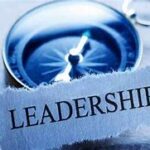1. Deep listening
Listening is a non-negotiable part of coaching — but how you listen matters. I follow the Co-Active Training Institute’s three levels of listening framework (used by Columbia University) to go beyond the surface-level listening we use in everyday conversation (listening to respond versus more concentrated communication).
At level three, you’re attuning to the whole person – not just their words, but also their tone, body language and even their pauses – aspects of communication that go well beyond the reach of AI.
2. Asking questions instead of providing answers
Many people assume business coaching is about giving expert advice (and AI doesn’t hesitate here). But the best coaches help people discover their own solutions, acting as a guide rather than a director. They draw on their experiences and intuition to frame open-ended questions that hit the right nerve at the right time.
More importantly, they encourage people to do their own self-discovery work more effectively than any automated follow-up message ever could.
3. Avoiding judgment but pushing accountability
ChatGPT4 quickly became the ultimate ‘yes man,’ and while validation can feel good (users asked for it back when this feature was removed from ChatGPT5), it doesn’t always drive personal growth. Great coaches balance empathy with accountability, knowing when to nudge people out of their comfort zone. I saw this play out in a recent leadership meeting.
My team presented color-coded scorecards that revealed not just where we were succeeding, but also where we were struggling. Their willingness to share both sides of the story — not just the wins — reflected the kind of accountability that makes real business growth possible.
4. Having difficult conversations people feel good about
Safety and accountability don’t always feel compatible, but the best coaches bring them together. AI won’t call you out (unless you prompt it to), but a good coach will show you they care enough to challenge you.
But here’s the critical thing: the best coaches may be delivering hard truths, but they’ll also monitor how the information is received and adjust their tone and delivery style so that the outcome feels not only more palatable, but also actionable.
5. Investing in growth
As a leader, effective coaching isn’t just about developing strategy and solutions; it’s also a process of actively supporting people in setting goals — and helping them work toward achieving them. When team members see that you’re invested in their growth, it’s a powerful opportunity to develop loyalty and trust, which often results in higher retention and greater collaboration on shared objectives.
Outsourcing that whole process to AI strips away one of the biggest business benefits of human connection: productivity.
Finding a balance between AI and human coaching
Despite all these advantages, the reality is that more people are turning to AI tools like ChatGPT as a substitute for human coaching. Even inside the coaching industry, norms are evolving.
Two-thirds of coaches are now using AI with their clients, and nearly half have built their own app or digital tool. Personally, I use AI nearly every day. It’s a remarkable thought partner, and it helps me frame issues, uncover insights from complex data, and explore solutions.
And I think this is precisely where AI can add value for all of us seeking career guidance and feedback – as an extra layer of context and support to augment the work of a human coach.
For example, AI is great in the discovery and data collection stages of the coaching journey. It can provide a structured line of questioning, and crunch huge amounts of data like job market trends, skills gaps and past performance to provide precise, actionable feedback.
AI also excels at the admin side of coaching — the scheduling, progress tracking, report generation and reminders that even the best human coaches sometimes overlook.
And, unlike a human coach, AI is always on — for those times between coaching sessions when background or input is needed in the moment.
But this alone is not enough. Ideally, these AI efficiencies free up human coaches to focus on the impactful, strategic work only they can accomplish. It means they’re more available to provide emotional intelligence and empathy for complex career decisions.
And it means they can be more present to pick up on the multifaceted, non-verbal and emotional cues that AI simply overlooks.
For me, that’s the true power of coaching — it reaches people on a deeply human level. AI can streamline processes, distill data and surface insights, but it can’t build trust, spark confidence or look someone in the eye and remind them they’re capable of more than they believe. That’s the work of a leader — and it will always be more effective when delivered human to human.
Source: Entrepreneur









